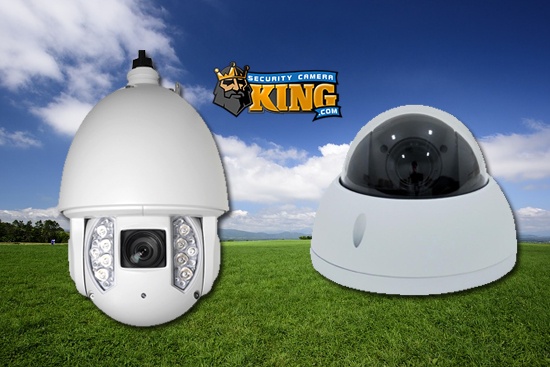 If the Digital Video Recorder or DVR is the heart of a digital video security system, then the CCTV digital camera must be the eyes. The cameras used today are top-notch technological wonders that provide high quality color video images. The have a vast selection of optional features that make their use extremely flexible and easy to use under almost any application.
If the Digital Video Recorder or DVR is the heart of a digital video security system, then the CCTV digital camera must be the eyes. The cameras used today are top-notch technological wonders that provide high quality color video images. The have a vast selection of optional features that make their use extremely flexible and easy to use under almost any application.
A Closed Circuit Television or CCTV digital camera are the eyes of a digital security system because they are the devices that “see and capture” the action. There are many types of CCTV digital cameras available but they all “see and capture” using one of two similar methods. To describe how a CCTV digital camera works without getting too technical, we’ll tell you about their sensors and other parts of the cameras and how they integrate to get the job done.
Let’s divide the average CCTV digital camera into three parts: 1) The lens; 2) The sensor; and, 3) The analog-to-digital converter and all other supporting electronics.
The Lens
There are essentially two different type of lenses used in CCTV digital cameras. The first we’ll mention is the “fixed lens.” The fixed lens is so named because the focal length of the lens is stationary or fixed. This indicated that the lens as a definite range of focus as well as a fixed field of view. These lenses are excellent for cameras that are used in applications where the distance between the subject or object being recorded and the camera is usually constant. Examples of these uses include retail store shoplifting coverage, equipment monitoring, gate entrance monitoring, room surveillance, etc.
The varifocal lenses have a variable focal length. This means that these lenses can zoom in or zoom out on subjects or objects and be manually focused. This lens is a bit more expensive than a fixed lens. Applications for this lens would include uses where the camera position is changed on a regular basis or the field of view is changed often.
Either type of lens has basically the same function: Manipulate the light emitted by the image in the camera’s field of vision, so that it presents an incredibly high quality image that is focused on the cameras incredibly small sensor.
The Sensor
There are also two different type of lenses used in CCTV digital cameras. They take the focused light image and convert it into tiny electrical charges that can be used to create a digital video file or image. The two sensors used are the Charged Coupled Device or CCD and the Complimentary Metal Oxide Semiconductor or CMOS. At one time the CCD produced a high quality image than the CMOS at a slightly higher cost in price for the sensor. The CMOS on the other hand, used far less electricity to complete the task of creating the electronic video image. As time and technology progresses, the newer CCDs use less electricity and the newer CMOSs produce a higher quality image so that they are relatively similar in power usage, quality and cost.
Whether it’s a CCD or a CMOS, the sensor, with the help of supporting electronic circuitry, pass the image which at this point is in analog format, to the analog-to-digital converter.
The Analog-to-Digital Converter
CCTV digital cameras produce their finished product, the video image, in a binary or digital format. Since the equipment used along the way to produce the image does so basically using analog methods, the analog-to-digital converter is necessary to transform the analog signal into digital data. This converter is usually a relatively small Integrated Circuit (IC) chip that is designed specifically for this purpose. It must be very powerful and extremely fast in order to convert the signal for use in real-time (live).
When the signal leaves the analog-to-digital converter, it is now in digital form and ready to be sent to the DVR and/or monitor. This is done by one of two different methods as well. Either the signal is carried to the DVR using a video transmission cable (which in most cases is an RG-59 coaxial cable), or wirelessly converting the signal into a radio signal that can be transmitted for the camera to a corresponding receiver.
This should give you some working knowledge on how a CCTV digital camera works. If you need additional information or considering a purchase, please contact one of our security experts today using on-line “Live Chat” or by toll-free telephone at 866-573-8878.











